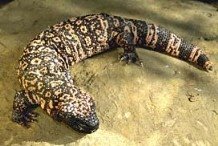New Mexico honors its Bataan survivors. It always has, ever since they were rescued at the end of World War II. Here is the latest example, a story printed in the Albuquerque Journal yesterday (Friday, August 26).
Bataan Death March survivor dies in Oregon
By Charles D. Brunt / Journal Staff Writer
Thursday, August 25th, 2016 at 11:44pm
ALBUQUERQUE, N.M. — Dwight Raymond Cable, a Bataan Death March survivor who joined the New Mexico National Guard’s 200th Coast Artillery Regiment while stationed here as a research scientist with the Soil Conservation Service in April 1941, died in his sleep Aug. 12 in Eugene, Ore., his nephew, Gary Cable of Peralta, said Wednesday. Dwight Cable was 99.
The Chicago native grew up in Tucson and attended the University of Arizona before graduating from the University of Idaho and going to work for the Soil Conservation Service, now known as the federal Natural Resources Conservation Service. Eight months before Japan’s sneak attack on Pearl Harbor, which triggered America’s direct involvement in World War II, Cable joined the New Mexico National Guard and soon shipped out to the Philippines.
In April 1942, Japanese captors marched about 78,000 prisoners of war – 12,000 Americans and 66,000 Filipinos – for six days on the Bataan Peninsula on the Philippine island of Luzon to a prisoner-of-war camp known as Camp O’Donnell. Many were denied food, water or medical care, and some were stabbed or bayoneted along the 65-mile route.
Among the American defenders of Bataan were Cable and some 1,800 soldiers from New Mexico, many with the 200th and 515th Coast Artillery Regiments. About half of them did not survive the war.
Cable, who was a company clerk with C Battery of the 515th Coast Artillery Regiment when captured, was sent on a “hell ship” to a POW prison camp near Shinjuku, Japan, where more than 2,300 other American POWs were held. His capture was first reported to the International Committee of the Red Cross on May 7, 1942, and the last report was made on Oct. 15, 1945. Based on those reports, he was imprisoned for at least 3½ years before being liberated by U.S. forces.
Gary Cable said his uncle’s only comment on his POW experience was: “You had to keep your sense of humor. Those that didn’t, didn’t make it.”
“What I remember most about Dwight was his dry sense of humor,” Gary Cable said. “He was once hiking with my parents in the mountains near Ouray, Colo. My mother was interested in learning about the plants they saw, and asked Dwight to identify them for her – including by scientific name. It took her a while to realize he was giving her the same scientific name for every plant she pointed to.”
Dwight Cable’s younger brother, Lowell Dean Cable, went into Normandy via Omaha Beach on the day after D-Day. His older brother, Donovan Chambers Cable, tried to join the military as well but was medically disqualified from contributing to the war effort.
After the war, Cable went back to work for the Soil Conservation Service and later for the U.S. Forest Service. He wrote more than 100 peer-reviewed research papers and articles on native desert grasses and other plants. He was an avid hiker, outdoorsman and nature photographer.
Even after he retired and moved to Eugene, Ore., his family sent him a “care package” every year for his birthday, filled with items like biscochitos and a bag of red chile pods.
A memorial service will be held in Eugene on Dec. 16, which would have been Cable’s 100th birthday, his nephew said.
With Cable’s passing, only 13 former members of the New Mexico National Guard’s 200th and 515th Coast Artillery Regiments who survived the Bataan Death March are still living, according to the Bataan-Corregidor Memorial Foundation of New Mexico. Seven of them reside in New Mexico.




No comments:
Post a Comment